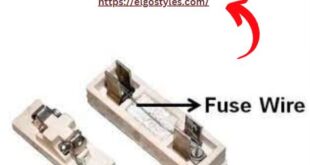Differences Between MCB, MCCB, ELCB, and RCCB Introduction: In the realm of electrical engineering and circuit protection, the acronyms MCB, MCCB, ELCB, and RCCB often arise. Understanding the distinctions between these devices is crucial for ensuring the safety and efficiency of electrical systems. In this article, we’ll delve into the …
Read More »Tag Archives: Circuit protection
What Happens if We Connect a Polar Capacitor the Wrong Way?
Answer: Connecting a polar capacitor the wrong way can lead to reverse voltage, causing the capacitor to fail catastrophically, potentially resulting in leakage, overheating, and even explosion. Reasoning: Polar capacitors, such as electrolytic capacitors, are designed to handle voltage in one direction. Connecting them the wrong way can subject them …
Read More »Why ammeter is connected in series?
Why ammeter is connected in series? Introduction In the world of electrical circuits and measurements, the ammeter holds a crucial position as an indispensable tool. An ammeter, short for “ampere meter,” is an instrument designed to measure the flow of electric current in a circuit. It provides valuable insights into …
Read More »Which material is generally used in a fuse wire?
Answer: The material generally used in a fuse wire is an alloy of tin and lead. Reasoning: Low Melting Point: Tin-lead alloy has a low melting point, ensuring it melts easily under excessive current. Good Conductivity: The alloy maintains good electrical conductivity, ensuring efficient current flow. Safety: It’s chosen for …
Read More »What material is used for making electrical fuses and why?
Answer: Electrical fuses are typically made from materials like glass, ceramic, or fiberglass-reinforced plastic. These materials are chosen for their ability to withstand high temperatures and provide insulation, ensuring safe operation. The fuse material must also have a predictable response to overcurrent conditions, quickly melting or breaking when current exceeds …
Read More »How many amps does it take to trip a 15-amp breaker?
Answer: A 15-amp breaker typically trips when the current exceeds 15 amps. Reasoning: A 15-amp breaker is designed to protect circuits from overcurrents. If the current surpasses 15 amps, the breaker interrupts the circuit to prevent overheating and potential hazards, ensuring safety. FAQs: Q: What is the purpose of a …
Read More »Which current is harmful AC or DC?
Answer: Both AC and DC can be harmful, but the severity of harm depends on various factors like voltage, current, and duration of exposure. Reasoning: he harmfulness of a current depends on factors such as voltage, current intensity, and duration of exposure. Both AC (alternating current) and DC (direct current) …
Read More » Electrical Engineering World Wiring a Brighter Tomorrow!
Electrical Engineering World Wiring a Brighter Tomorrow!






